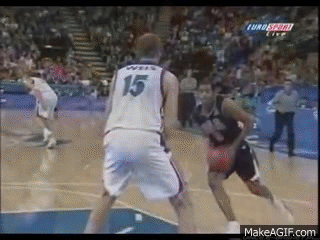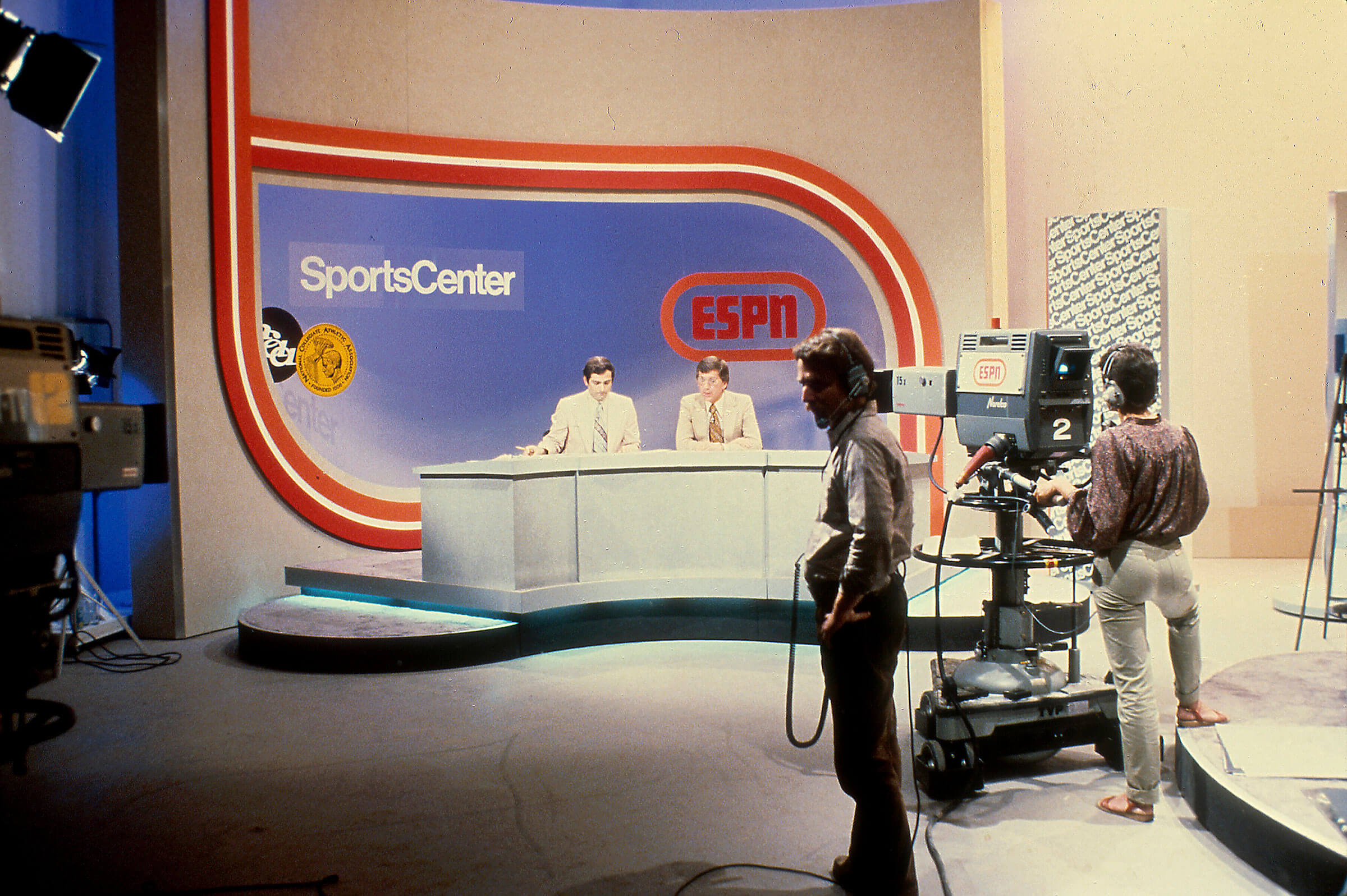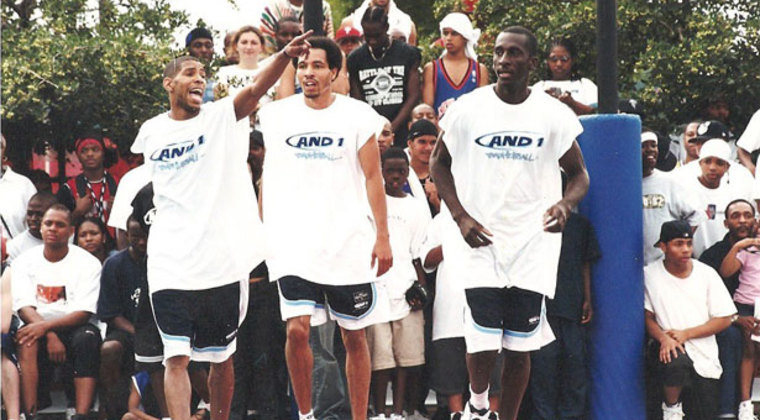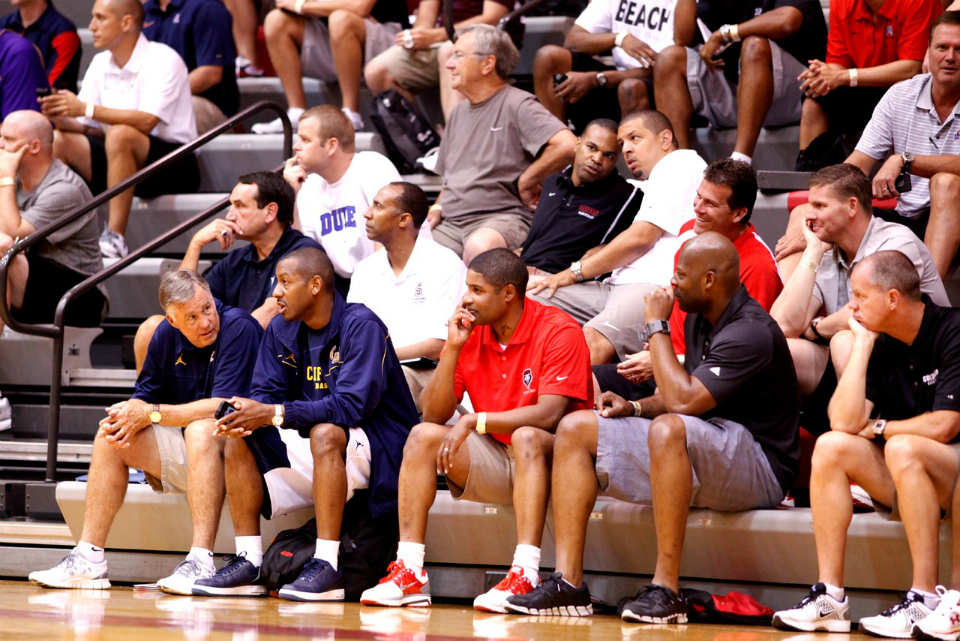The Evolution of the Highlight
Since ESPN rolled out Sportscenter for the first time in 1979, the highlight has been a bedrock of basketball culture. There is no simpler, more efficient way to grab a game’s most gripping moments and share them with an audience. An entire contest can be summed up in a few clips.
As the highlight has evolved, it’s become about far more than just game recaps. A highlight can be a compilation of domination, such as a litany of soul-crushing dunks by Russell Westbrook or three-point barrages by Steph Curry. It can also celebrate season-long accomplishments or get a high school athlete on the map for college scouts. Highlights inspire, celebrate, thrill and inform, all within a matter of moments.


 ESPN
ESPN On Sept. 7, 1979, ESPN set out on a mission that many considered positively ludicrous, debuting a network devoted to covering sports around the clock. Each night was capped with Sportscenter, a program that would recap the day’s top action. Due to television rights and the cost of showing games, ESPN rarely got the privilege of airing the top contests, so it needed another way to share the sports world’s biggest stories.
In came Sportscenter, which informed viewers of games’ outcomes in short, digestible bites, each one rarely lasting longer than a few minutes. The show’s anchors livened up the video with clever catchphrases (the gem titling this section came from Rece Davis), and viewers came to crave this mode of getting their sports fix.

Given sneakers’ importance in the basketball landscape, it should come as no surprise that a shoe company helped jumpstart the highlight revolution. To this point, highlights were mainly focused around teams and game action. But And1 was about to show off the individual.
The shoe company released its first mixtape in 1998, with Rafer Alston, better known as Skip To My Lou, as the headliner.

The tour romanticized isolation basketball and breaking down an opponent one-on-one, and players realized they could build a personal following outside of team success. For some, embarrassing the opponent became as critical as winning and losing. The tour turned players like the Professor, AO and Hot Sauce, complete unknowns previously, into household names, stoking the notion that through individual expression one could make it on the big stage.
The buzz surrounding the tour eventually fizzled out and the show is no longer carried by ESPN, but the tour’s legacy lives on through memories of Spyda, Escalade and countless others.

 New York Times
New York Times Before the mid-2000s, the only way to share highlights was through television or individual DVDs and VHS tapes. If you wanted someone other than your family and friends to see your work, you’d better hope a major network was showcasing your game. Outside of creating DVDs and mailing them to colleges - an expensive and time-consuming endeavor - your odds of getting noticed weren’t great.
That all changed when coaches and athletes gained the ability to create and share highlights themselves.
This movement kicked off when YouTube was founded in 2005 and purchased by Google in 2006. A free way to share unlimited amounts of video, YouTube became an endless cosmos of highlights. All a user had to do was create a free account, upload their video and do something noteworthy enough to go viral for 15 minutes of fame.
Then came Facebook and Twitter, both developed in the mid-2000s. These social platforms became perfect outlets to share highlights. With just a few clicks, organizations, coaches and athletes could present their best moments to the world. Apps such as Vimeo and Vine proved to be perfect mediums to capture moments for immediate dispersal.
No professional league embraced the growth of these sharing platforms like the NBA. While the NFL and, to a lesser extent, Major League Baseball, guard their highlights with a moated fortress, the NBA freely lets anyone post clips of their best players. It’s free advertising, and league commissioner Adam Silver’s approval has allowed basketball highlights to explode on social media.
"The way we look at it is our fans, in some ways, are our best marketers," NBA Vice President of Global Media Distribution Jeff Marsilio told Mashable. "We've got over a billion followers now on social media across the platforms. But what really drives that engagement is not so much what we are putting on social media but what fans are doing with that content: Sharing, interacting with and creating their own versions of it."
Social media has allowed highlights to be shared instantly. Now when a game-changing play occurs, fans can pull up a replay almost instantly. Many teams and leagues use push notifications to target users and send out highlights of the most impactful moments.

If coaches had their way, they would have more than enough time to sift through hours of game video and analyze every portion of every recruit’s performance. Is he hustling at all times? What’s his body language? Does he stay in his defensive stance or let up when he’s fatigued?
Unfortunately, this simply isn’t possible. Cramped schedules leave coaches with precious little time to evaluate each individual prospect, making mixtape videos an essential part of the recruiting process.
A recruit has a matter of moments to catch a recruiter’s eye with his mixtape before the viewer moves on. If the coach watches a couple of clips and is intrigued, he’s likely to turn to game video and make a more thorough evaluation of the player. While that video is ultimately what puts a scholarship letter in the mailbox, it’s the highlight that gets the recruit’s foot in the door.
The social media boom has made these mixtapes easier to share than ever, and the growth of recruiting websites such as Rivals and Scout has positioned them prominently for national audiences. Never has it been easier for a recruit to share his mixtape with schools he’s interested in, giving himself a heightened chance at landing a coveted offer.
Though athletes are capable of crafting videos by themselves, Hudl offers the ability to streamline this process. By simply clicking on a stat or a spot on the shot chart, an athlete can pull up a playlist of noteworthy sequences and select the ones he believes have the best chance of grabbing a recruiter’s attention. The mixtape is the critical bridge connecting athletes to recruiters.

 Fortune
Fortune